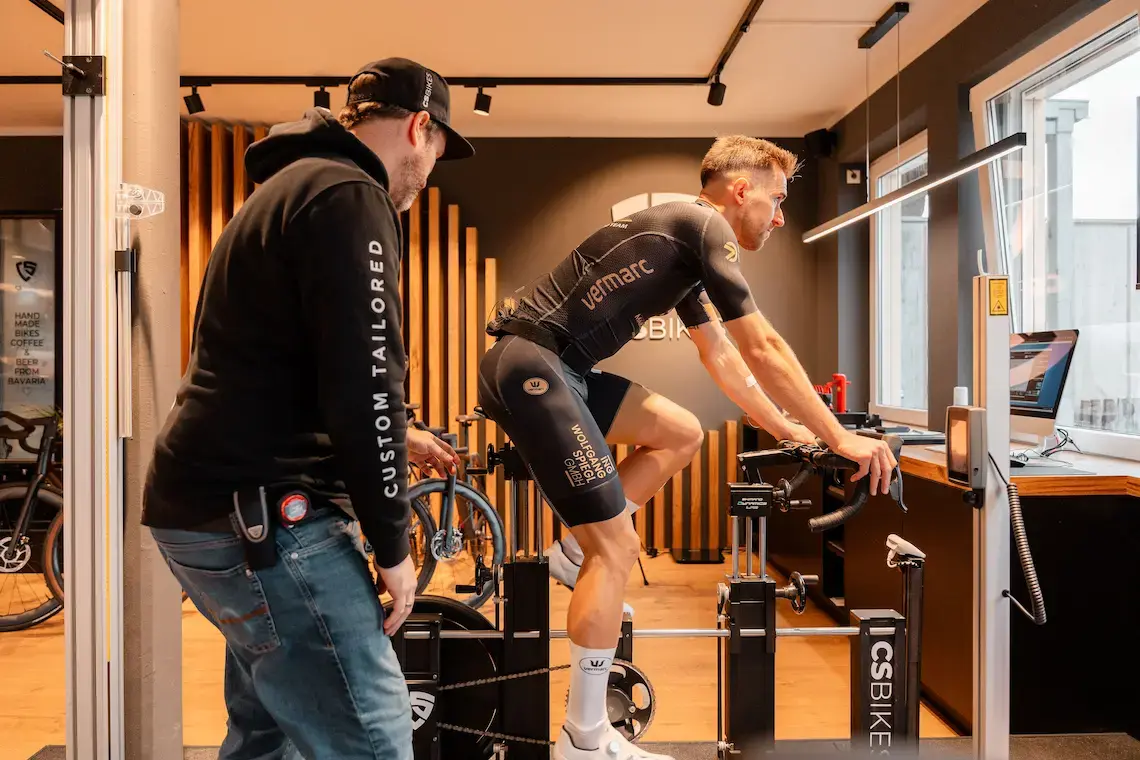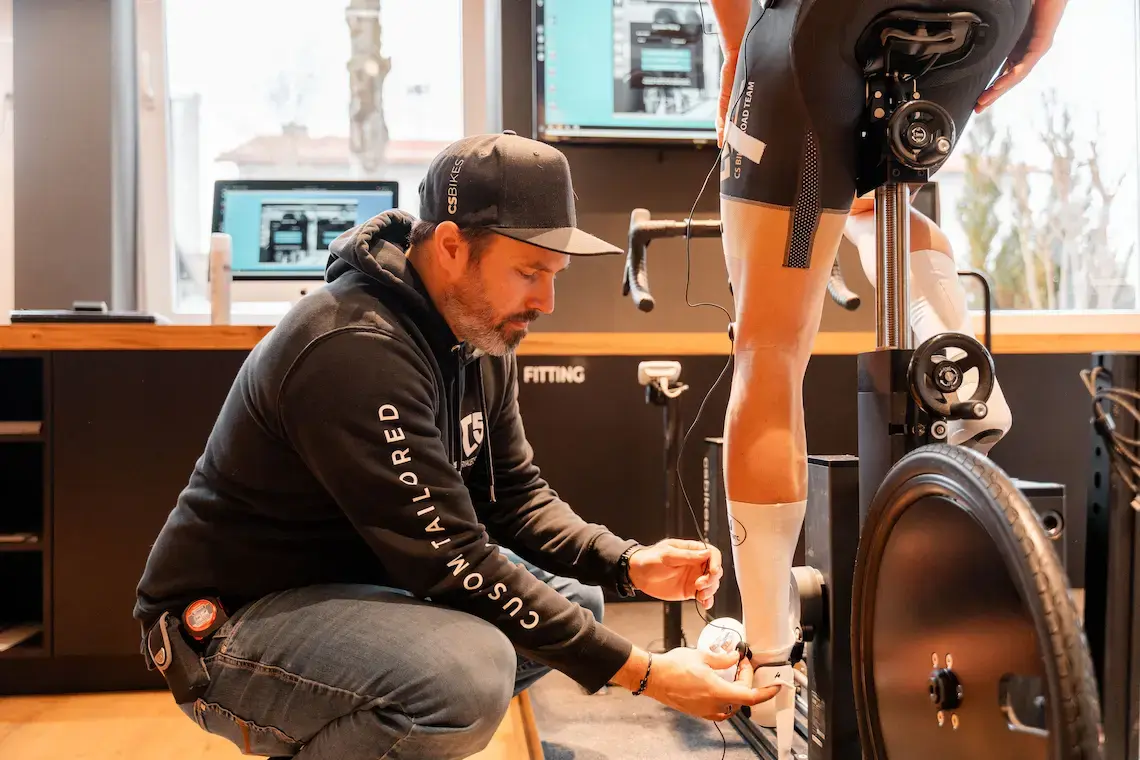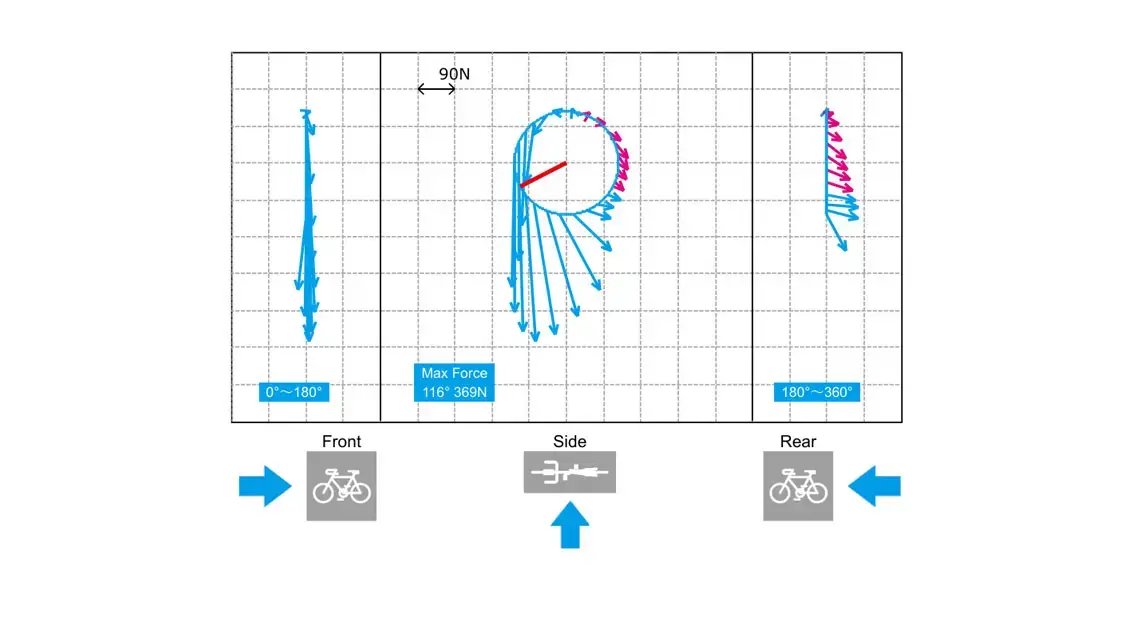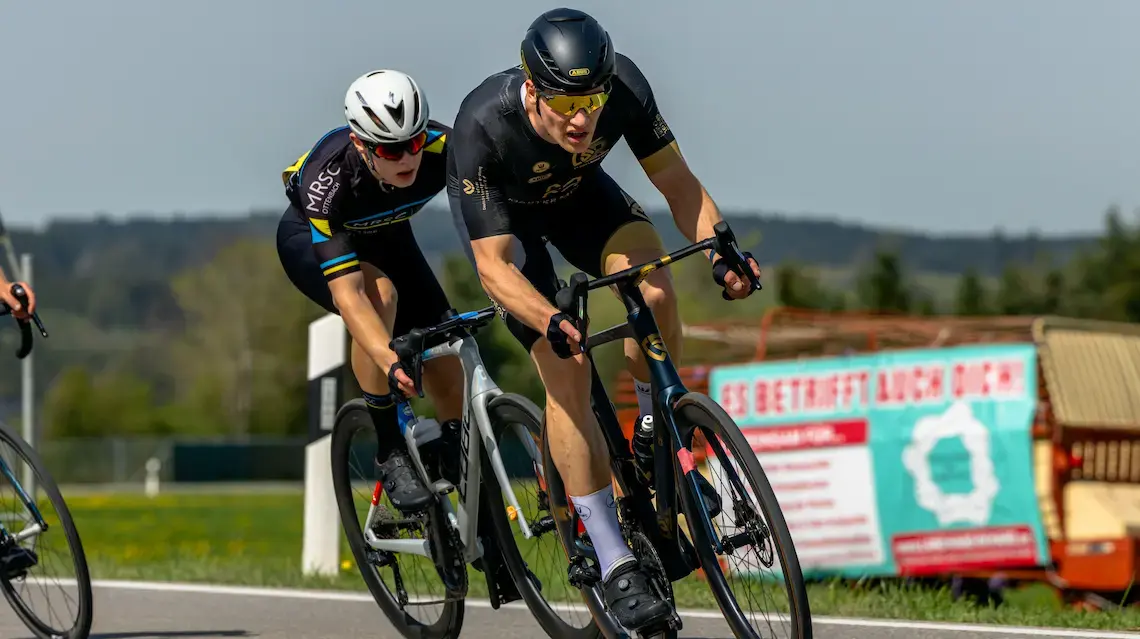Effective Force & It's Role in Cycling
|| 11 minutes || 3251
In the complex interaction between a cyclist and bicycle, the efficiency of the pedal stroke stands out as a fundamentally defining factor. It’s not just about pushing down on the pedals, it's about mastering the art of generating effective force to propel the bike forward as efficiently as possible. In this article we would like to explain in more detail why this is important and how we at CS Bikes work to optimize your pedaling efficiency!
Understanding Effective Force:
Effective force in cycling refers to the portion of force exerted by the cyclist on the pedals that contributes directly to propelling the bicycle forward. It's the driving force behind speed and acceleration, making it a critical aspect of performance for cyclists of all levels, from recreational riders to elite athletes. Effectiveness in force application not only determines speed but also influences endurance and the accumulation of fatigue.
At the core of every pedal stroke lies a complex interplay of biomechanics, physiology, and technique, with the aim of maximizing power output whilst minimizing energy expenditure. Effective force can be greatly increased by optimizing the riders fit to the equipment they are using.
Biomechanics: The biomechanics of cycling involve the interaction between the cyclist's body and the bicycle, particularly focusing on how forces are transmitted through the musculoskeletal system to the pedals. Proper biomechanics ensure efficient force transfer, reducing the risk of injury and maximizing performance.
Alignment and Posture: Maintaining proper alignment of the body, particularly the spine, hips, and knees, is crucial for optimizing force transmission.
Joint Angles: Optimal joint angles, such as hip, knee, and ankle flexion but also back, shoulder and arm positioning are influenced through the three contact points of saddle, pedals and handlebars. Adjusting these contact points will optimize joint angles and return greater pedaling efficiency.
Foot Positioning: The position of the foot on the pedal influences force distribution and stability during the pedal stroke. Proper foot positioning will minimizes the risk of foot discomfort and enhances force transmission.
Muscle Physiology Effective force generation in cycling relies on the coordinated contraction of various muscle groups, particularly those in the lower body. Understanding the physiological aspects of muscular function and fatigue begins with recognizing the significance of cadence. This is a pivotal factor in understanding how to both optimize the effective force of a rider and their power output. The factors to consider are:
Muscle Recruitment Patterns: Efficient recruitment of muscle fibers, including fast-twitch and slow-twitch fibers.
Muscle Fiber Composition: The composition of muscle fibers in individual cyclists can influence their ability to generate force and resist fatigue.
Energy Systems: Various energy systems, such as aerobic and anaerobic pathways, are employed to maintain force generation across different intensities of riding.
Neuromuscular Coordination
The coordination of muscle activation patterns and motor control is critical. Cadence again plays a vital role and directly influences the coordination of muscle activation patterns resulting in a smooth and efficient pedal stroke.
Motor Unit Recruitment: Motor Units within muscles refer to a motor neuron and the muscle fibers it activates. The recruitment of motor units determines the force output and rate of force development during pedal strokes.
Force Variability: Minimizing fluctuations in force output throughout the pedal stroke is essential for maintaining smooth and consistent cycling mechanics.

The Difference between effective and less effective
Research papers such as " Differences in pedaling technique between road cyclists of different competitive levels" by Juan García-López et al. (2014), investigate the differences in pedal stroke mechanics between cyclists of varying skill levels. This paper highlighted the increased efficiency of a professional cyclist due to lower resistive torque applied during the pedal upstroke and higher joint flexibility and muscular utilization.
The difference in effective forces between professional and recreational cyclists manifests in various ways
Speed and Performance: Professional cyclists, with their higher peak power output and more efficient pedal strokes, will always achieve faster speeds and better overall performance compared to recreational cyclists.
Endurance and Efficiency: Professional cyclists will sustain higher power outputs over longer durations due to superior conditioning and optimized biomechanics. Their pedal strokes are more efficient, minimizing energy wastage and fatigue accumulation.
Technique and Form: Professional cyclists typically exhibit smoother, more consistent pedal strokes with optimized force application throughout the entire rotation.
Equipment Utilization: Professionals have access to state-of-the-art cycling equipment tailored to their biomechanical needs, enhancing power transfer and efficiency.
Overall, the real-world difference in effective forces between professional and recreational cyclists translates into significant advantages in speed, endurance, and competitive performance. These differences underscore the importance of biomechanical optimization and equipment selection for cyclists who wish to improve their competitive performance and / or efficiency on the road.

Understanding the Data
Below we have 2 diagrams collected at CSBikes (the first is a professional cyclist and the second is a recreational cyclist)
Effective Forces are represented in the blue lines
During the downstroke phase of the pedal stroke, the primary focus is on generating effective force to propel the bicycle forward. This force is generated by pushing down on the pedal with the leg muscles, engaging primarily the quadriceps and gluteal muscles. The effective force during the downstroke contributes significantly to the power output and forward motion of the cyclist.
Braking Forces are represented as red lines
During the upstroke phase, when cyclists generate resistive torque or exert a force that doesn't directly contribute to forward movement, it's termed as resistance in the upstroke. Instead of adding to propulsion, this force acts as a "braking force," reducing the positive power output, expending rider energy and increasing fatigue.
Pedaling dynamics
We'll assume the pedal stroke begins with the left leg, as depicted in the images below. For simplicity, we're only illustrating one leg. The diagram displays 60 pedal stroke revolutions averaged and the maximum force exerted by the left leg and the braking force applied (shown in red) to the right leg.
As the rider initiates the downstroke with the left leg, it becomes the primary driving force in the pedal stroke's first phase, while the right leg moves in an upstroke motion. During the upstroke of the left leg, if pressure is not released effectively, it will reduce the power generation provided by the right leg.

Professional Cyclist
You can observe that the professional cyclist's force is directed straight downward, gradually easing off after reaching 180 degrees. Past this point, the force diminishes significantly, enabling the right leg's downstroke to be as efficient as possible.

Recreational Cyclist
You can notice that the force exerted by the recreational cyclist isn't entirely concentrated; there's no easing off after reaching 180 degrees. Beyond this point, the force remains consistent, limiting the efficiency of the right leg's downstroke.

How does this translate to the Real World
Professional Cyclist
Imagine a professional cyclist like Tadej Pogačar during the Tour de France. As he ascends a challenging mountain climb, his pedal strokes are not only powerful but also highly efficient. He maximizes the force applied to the pedals on the downstroke and actively releases force on the pedals during the upstroke. This smooth, circular motion ensures that power is continuously delivered to the pedals, propelling him up the hill with minimal energy wastage. Each pedal stroke feels controlled and deliberate, with a consistent application of force that allows him to maintain a high cadence and speed despite the challenging terrain.
Recreational Cyclist
Now consider a recreational cyclist on the same climb, their pedal strokes obviously lack the power but also the efficiency of the professional. They may push down forcefully on the pedals during the downstroke but fail to release on the upstroke and cannot maintain a smooth and continuous application of force. As a result, there may be moments when they momentarily lose momentum and the less efficient transfer of power to the bike will result in greater fatigue over the course of the climb, further reducing the power available to propel the bike forward.
So what does this all mean
In elite cycling, the effective force of a professional cyclist is crucial for maintaining high speeds with minimal effort. Yet, efficiency isn't just for elite athletes; it's equally important for improving the performance and enjoyment of recreational cyclists. Unfortunately, many recreational cyclists miss chances to boost their efficiency. Factors like proper bike positioning, suitable equipment, and personalized cadence are essential elements that significantly impact pedal efficiency. They play pivotal roles in enhancing overall performance and comfort for cyclists at every level.
Key point - Do not underestimate the importance of pedaling efficiency - it will make you faster whilst minimizing fatigue!
Nicholas Schick, an American residing in Germany, is the founder of CSBikes and has served as Geschäftsführer since 2020. With 15 years of fitting experience, he pioneered the fitting concepts that now guide all operations at CSBikes. His approach includes a comprehensive preparatory fitting process, utilizing Dynamic 3D motion systems, pedaling analysis, and pressure mapping and is certified by Shimano-Labs BikeFitting, SQ-Labs, and ID-Match.

